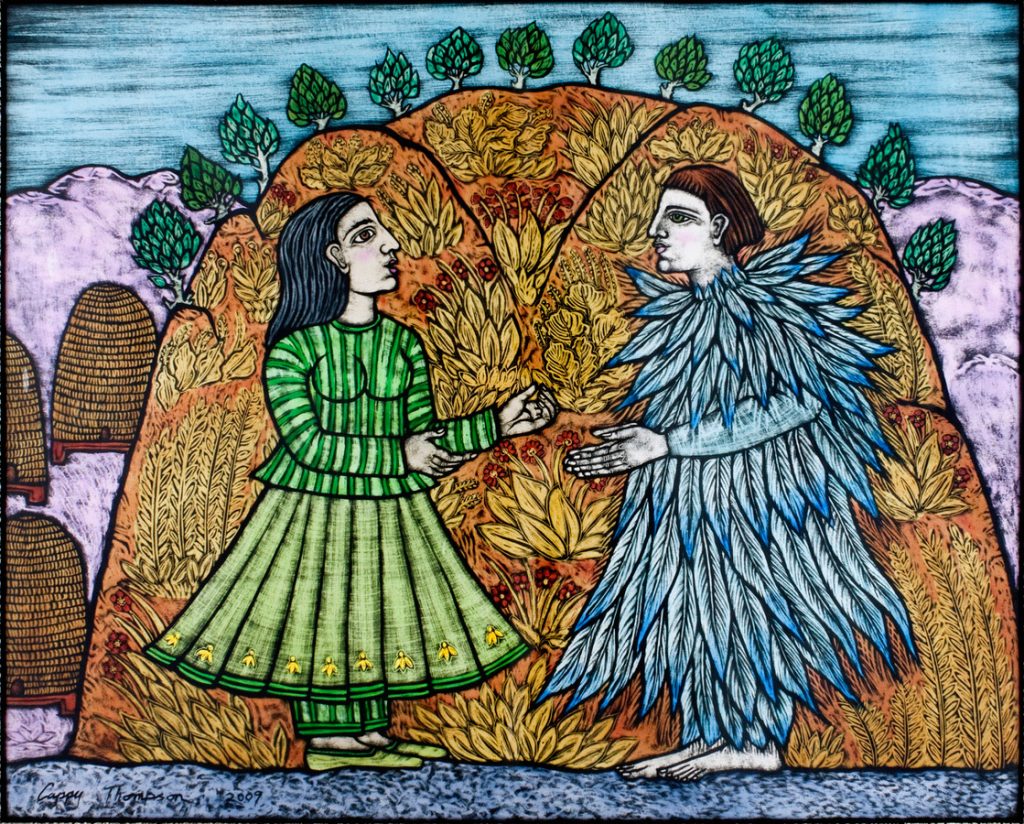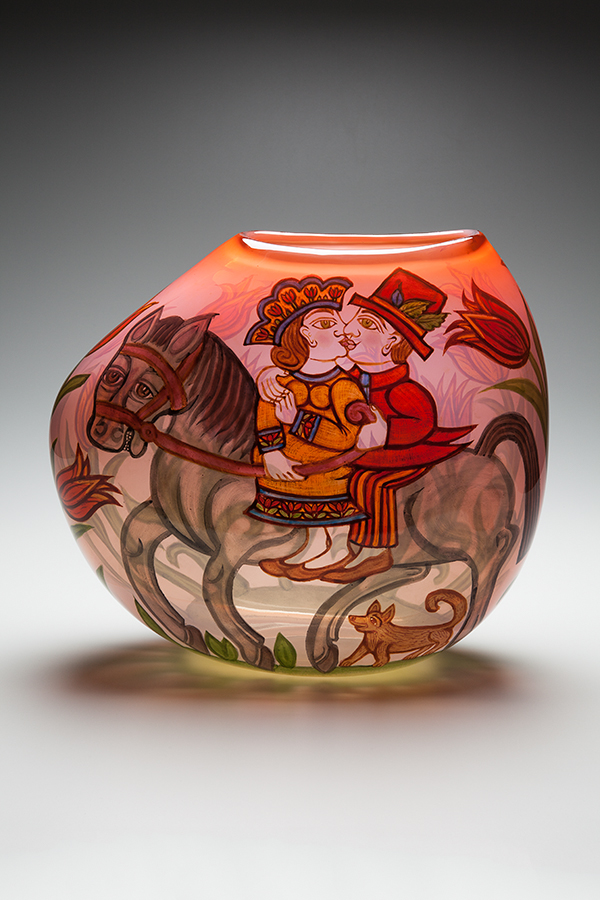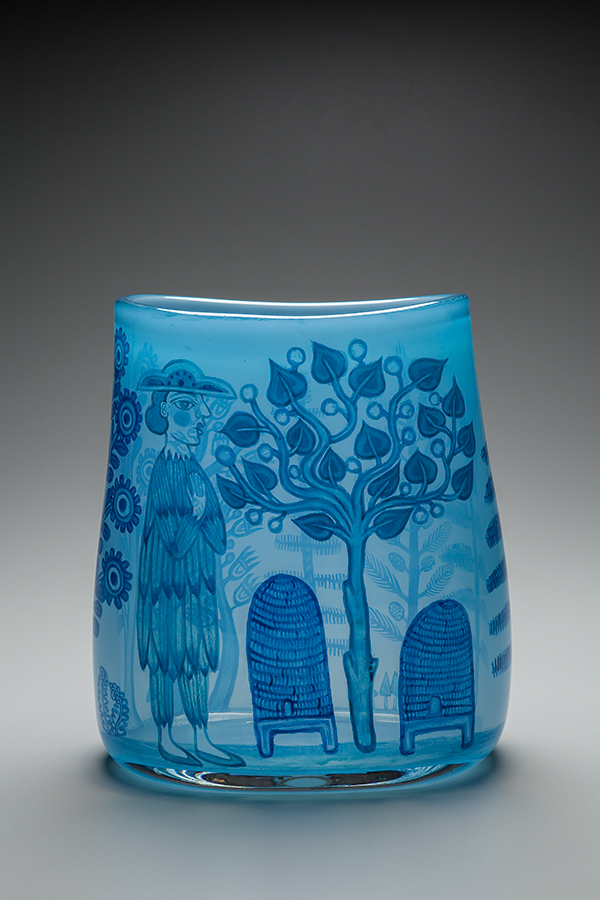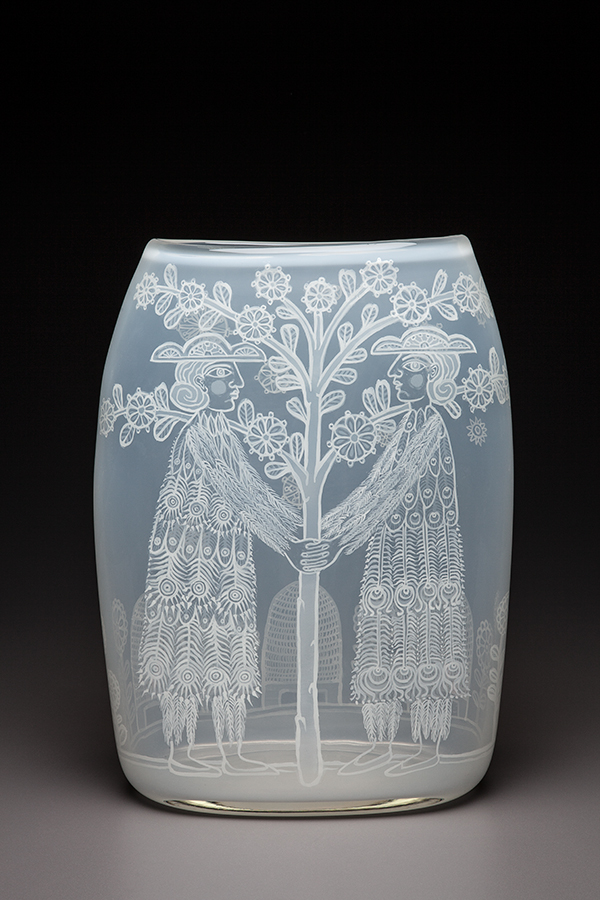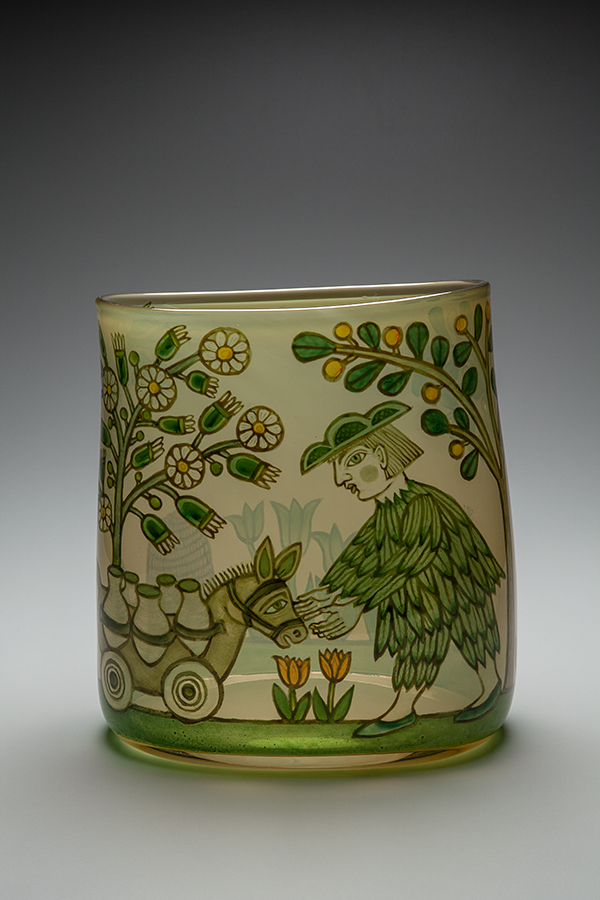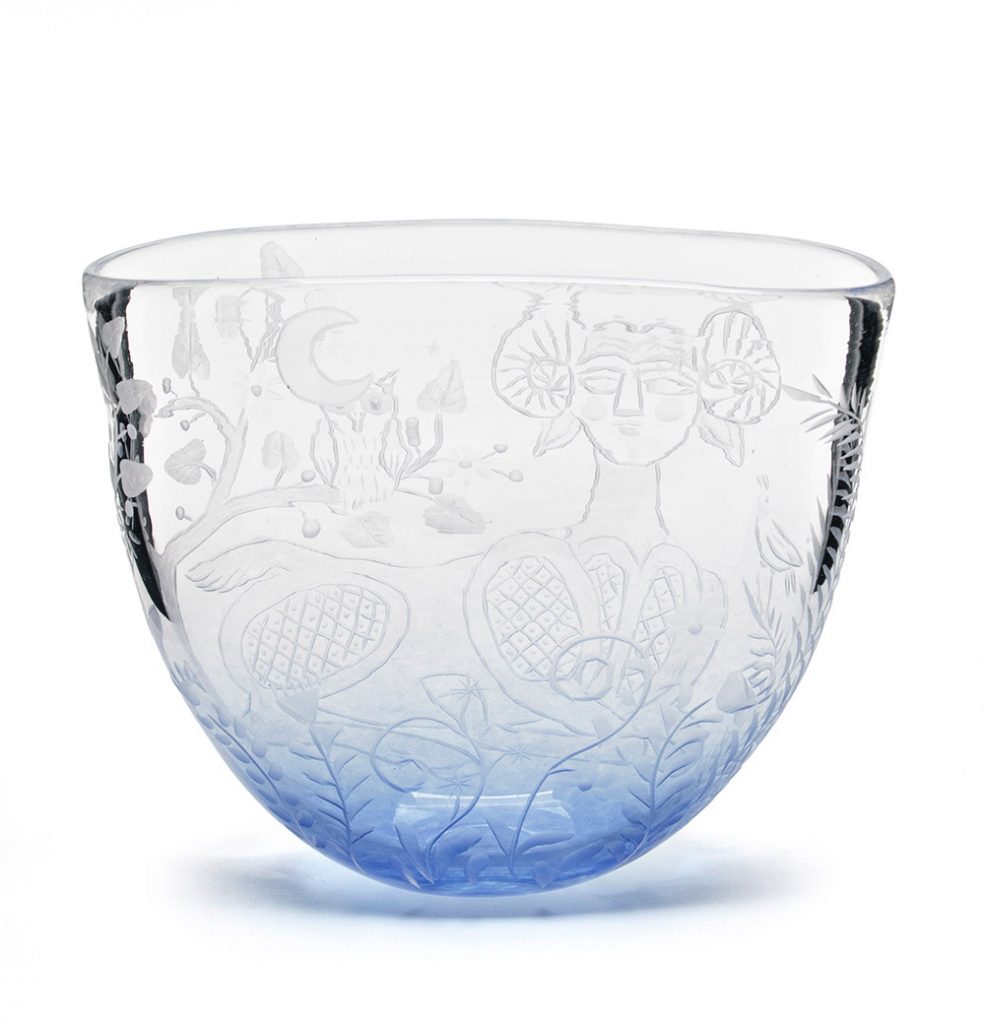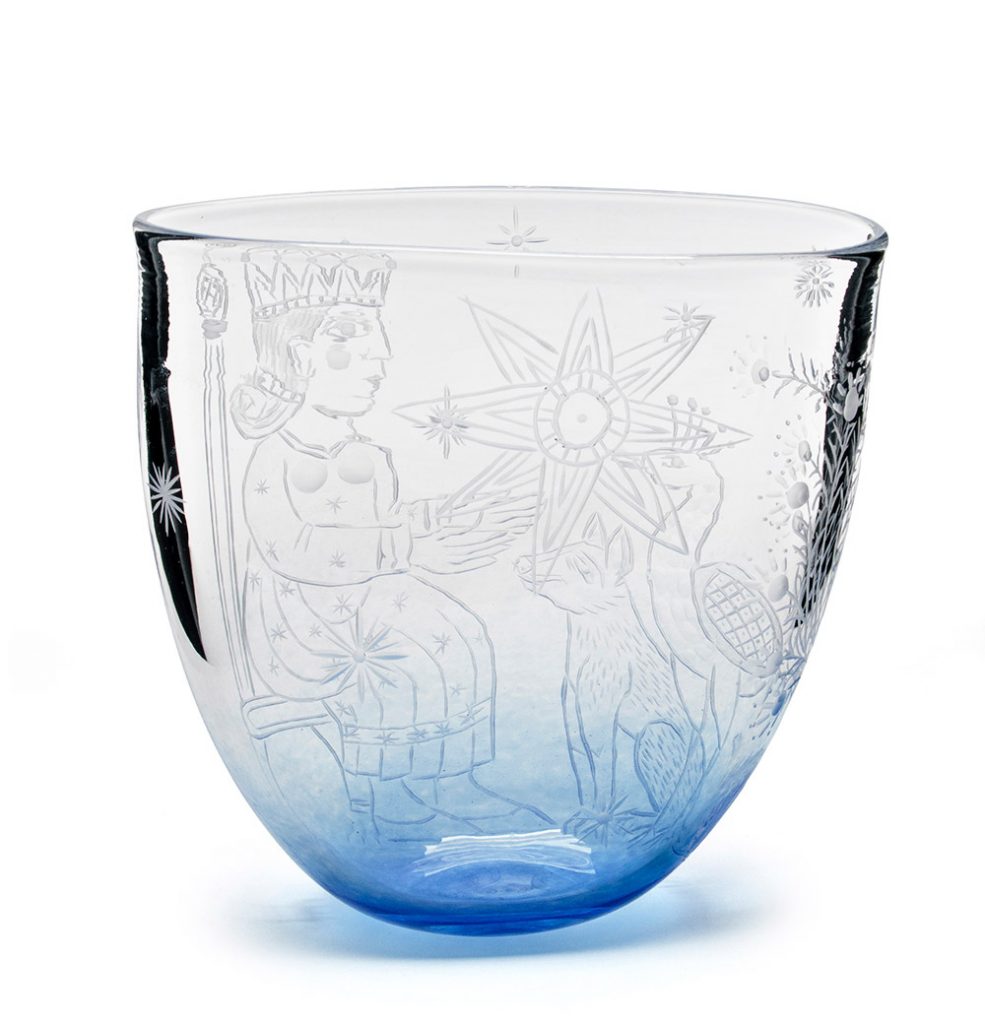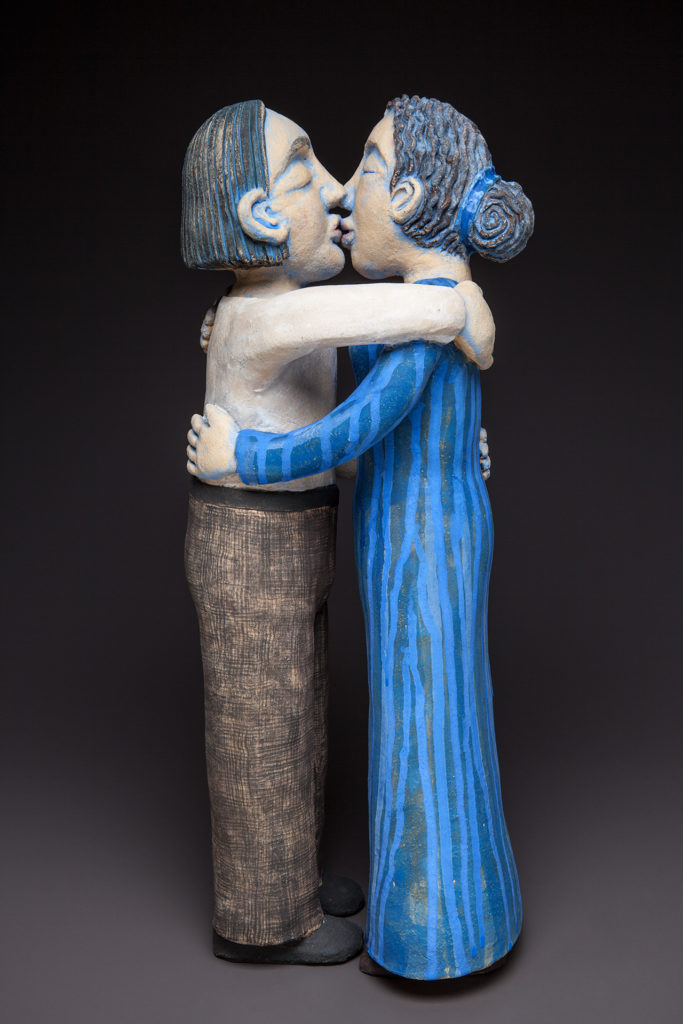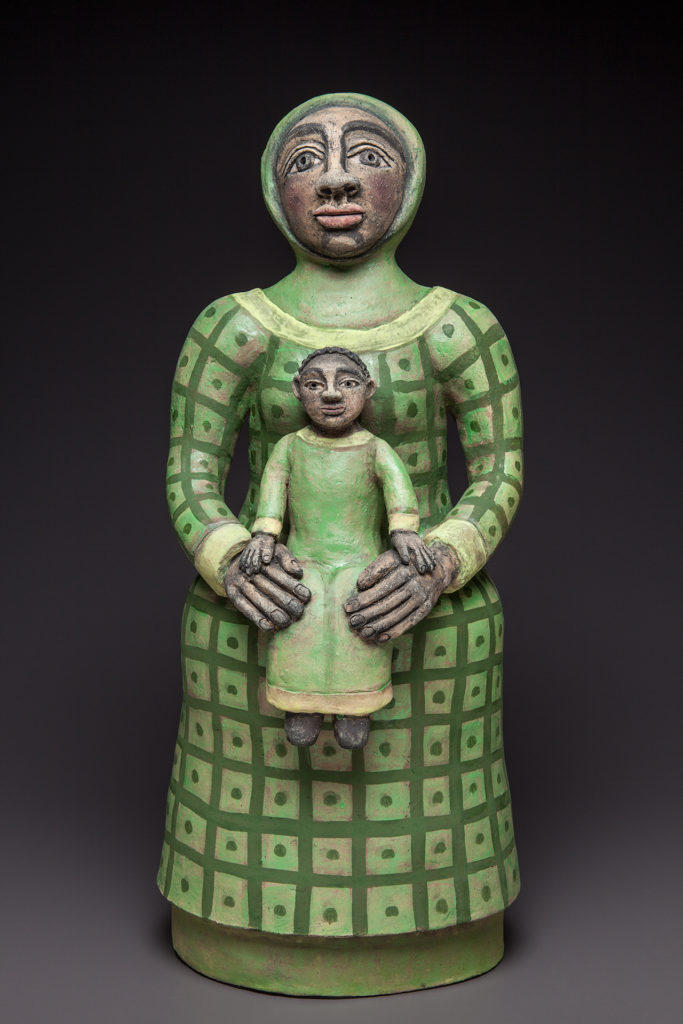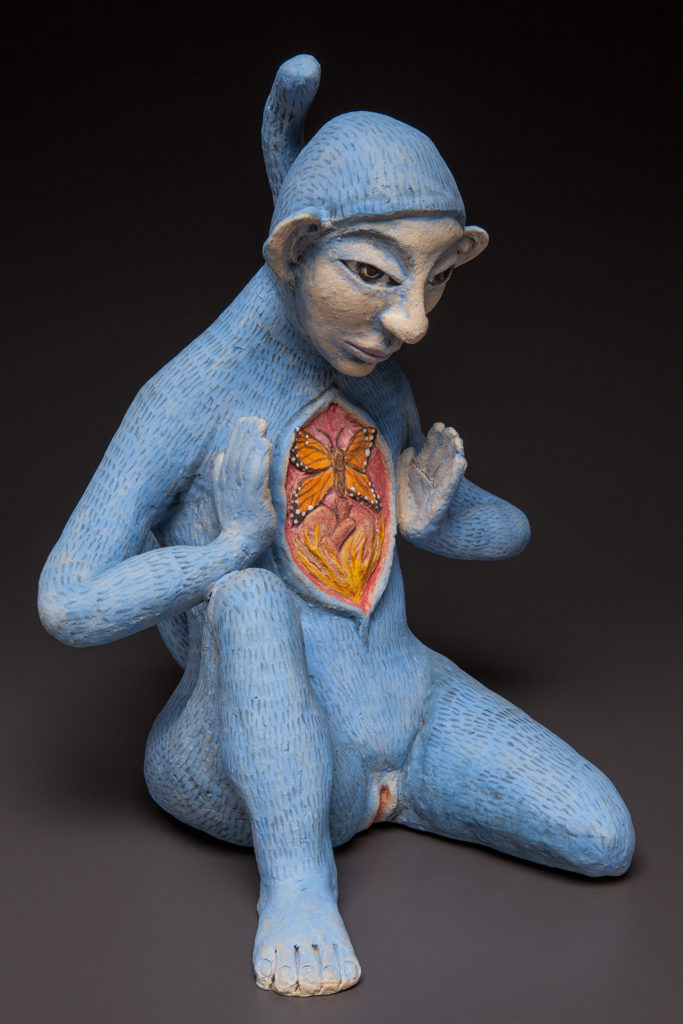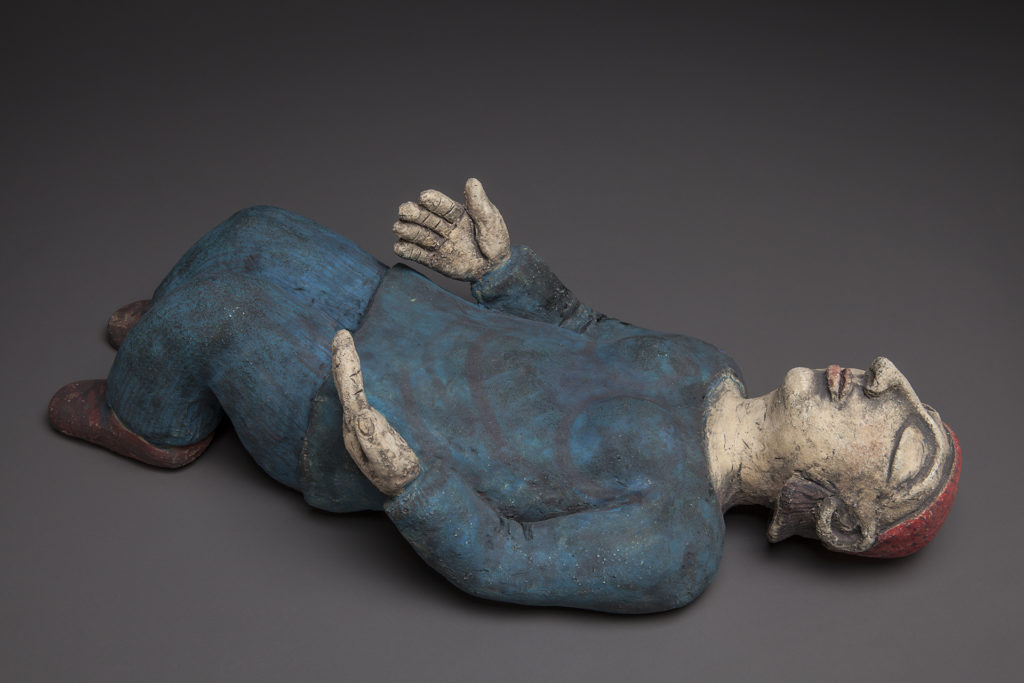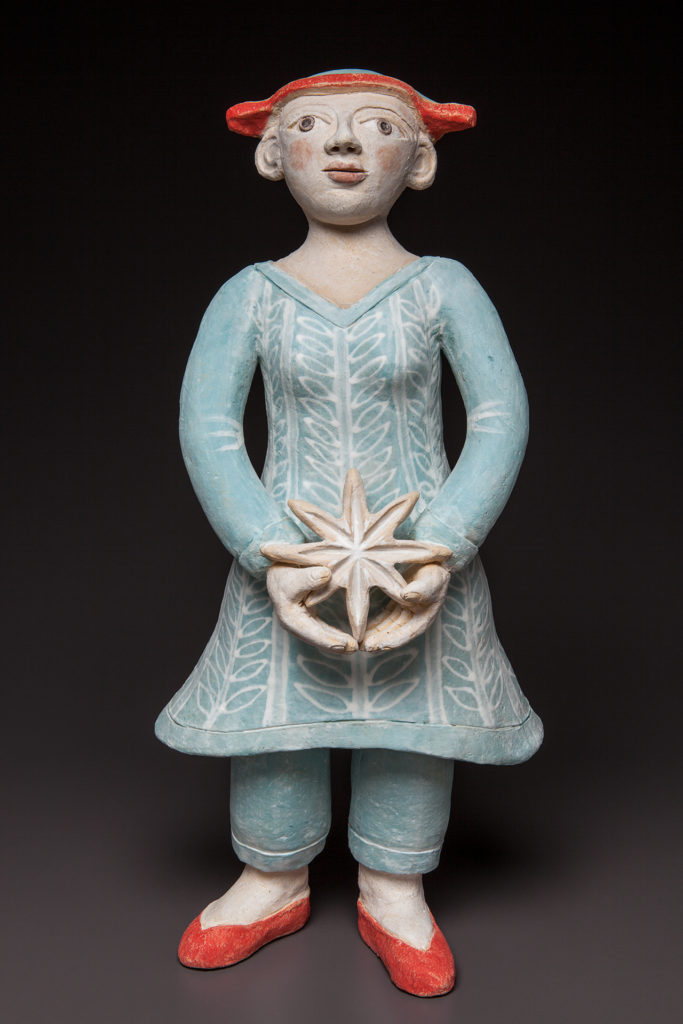Cappy Thompson
About
Cappy Thompson
Cappy Thompson has been painting glass since 1976. She started her career as a stained glass painter and became internationally recognized for her reverse-painted narratives on glass using the grisaille (or gray-tonal) painting technique. Her works have been shown and collected internationally. Recent works include architectural-scale public art installations in painted glass at Sea-Tac Airport, The Museum of Glass in Tacoma, and other Public sites.
“For me, as a narrative painter, the issue has always been content. The issue wasn’t glass, the material that I chose some 37 years ago. Nor was it the painting technique—grisaille or gray-tonal painting—that I taught myself to use. My work—which spans several decades and a variety of scales from the intimate to the monumental—has always been driven by content.
Early in my career I was drawn to the images, symbols and painting of the medieval period—but not just the Christian tradition of Western Europe. I loved the content of Hindu, Pagan, Judaic, Buddhist and Islamic painting as well.
These were images created before the invention of “art” as we know it—before painters controlled the content of their work. These were works decreed by religious and political authorities to depict the magnificence and beauty of the natural and divine order.
What I loved was the naïve naturalism and devout simplicity of that period—like the folk art of any period.
I started by designing and painting glass panels based on the narrative content of mythology, fables and folktales, drawn in oblique projection, with transparent jewel-like colors. Later I painted similar narratives on glass vessels.
About fifteen years ago I found myself moving away from mythological narrative and toward compositions on vessels that drew upon images and themes from my personal life. Elements would drift up and assemble into picture-poems that seemed to have a life of their own.
I began to understand these works as reflections of the spiritual and psychological issues in my life. I painted members of my family and myself in a kind of autobiographical fantasy, working with the mythopoetic materials of my life. I cast myself into scenes from various spiritual traditions.
This began an autobiographical exploration of world culture and spirituality that continues to the present.
I see now, after more than three decades of work, that I am like those medieval painters striving to express magnificence and beauty. But my expression focuses on the human experience of goodness, of hope and of love”.

